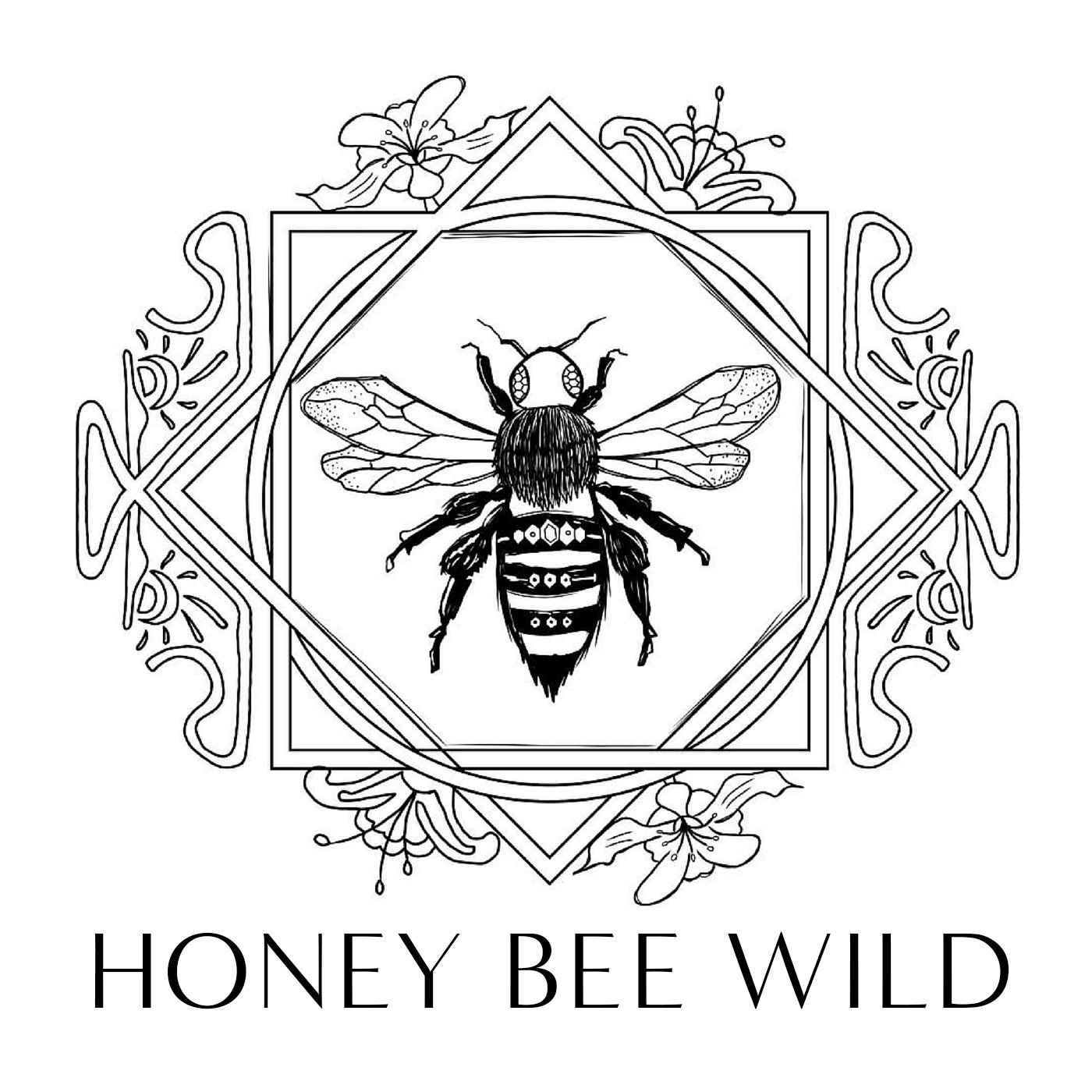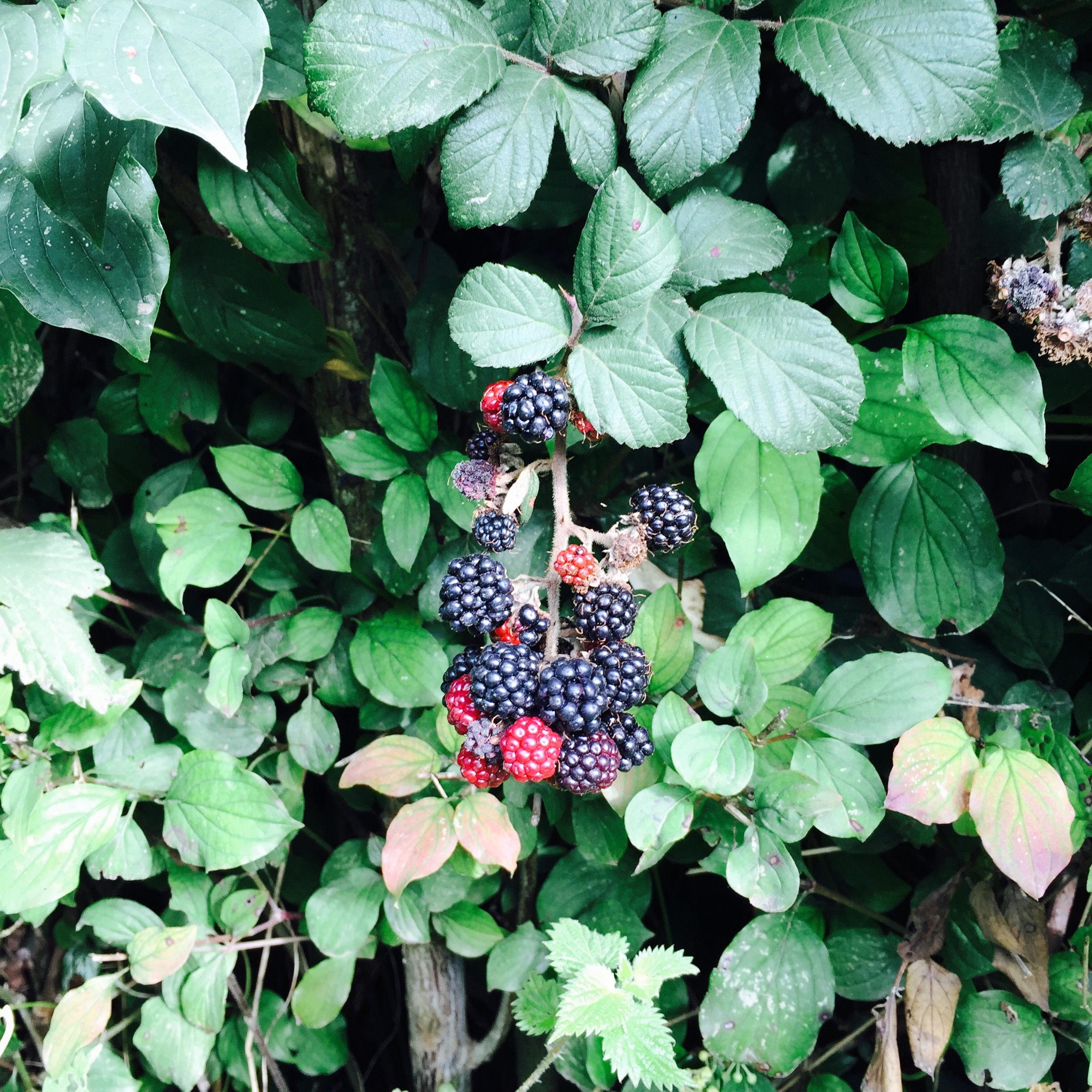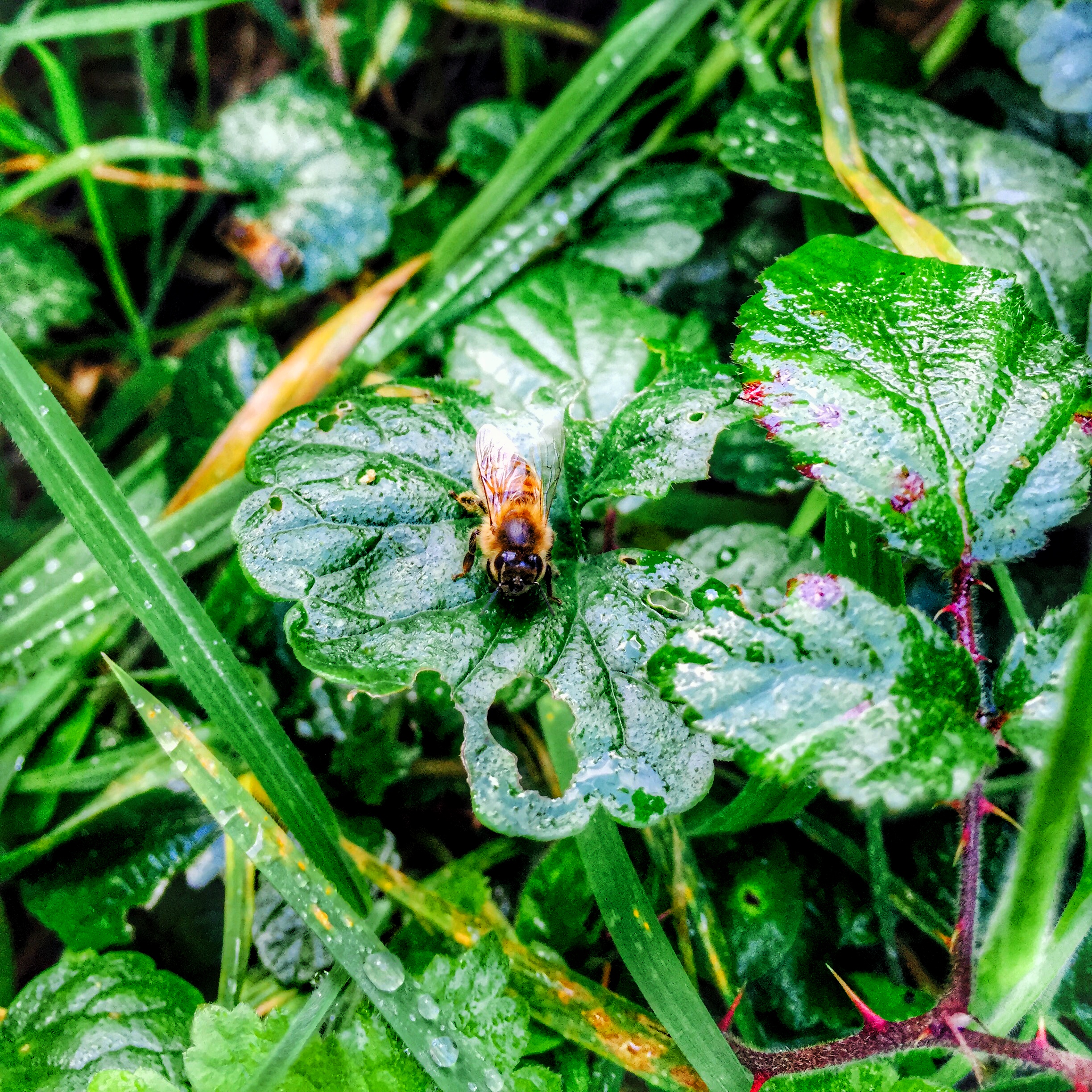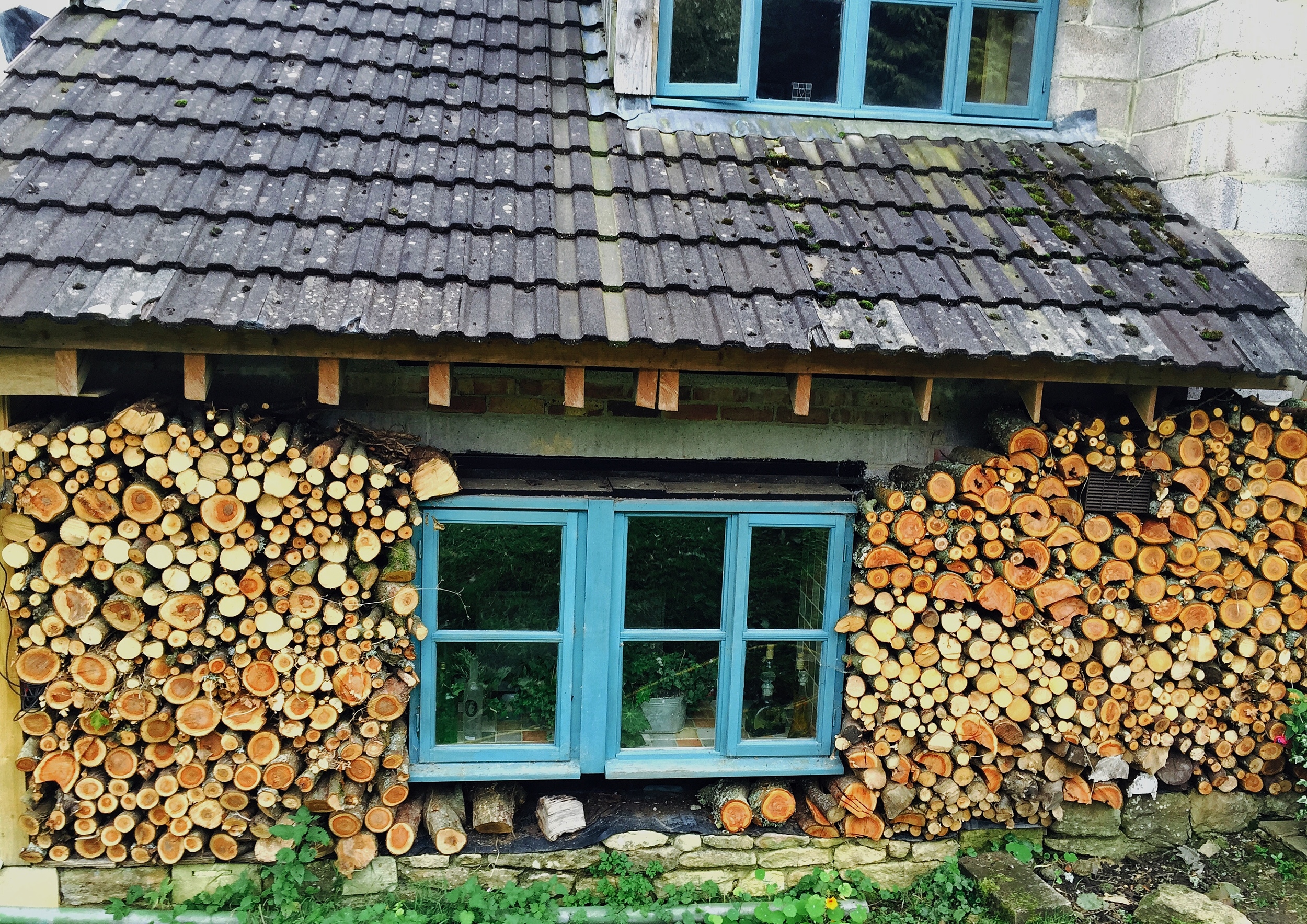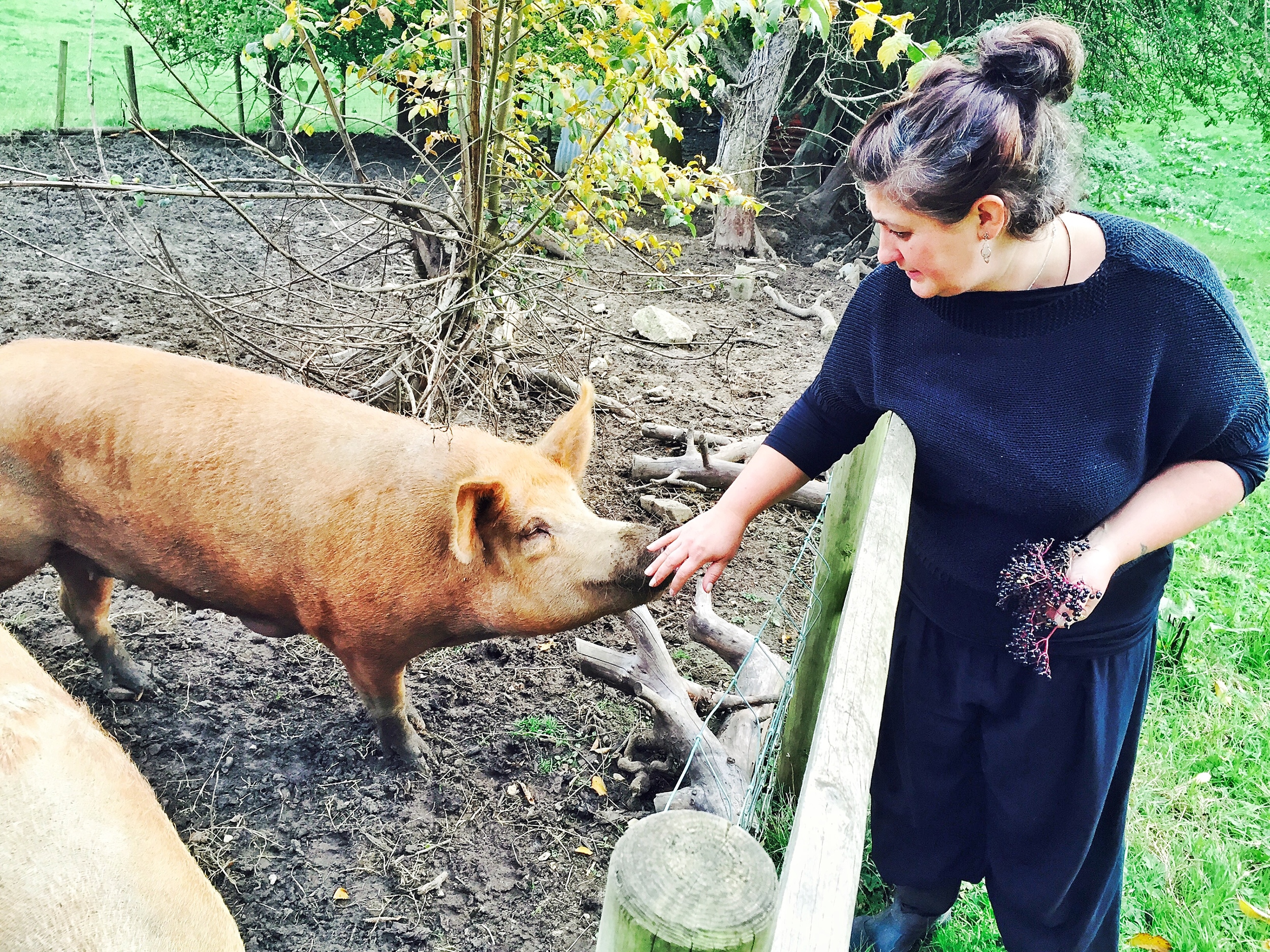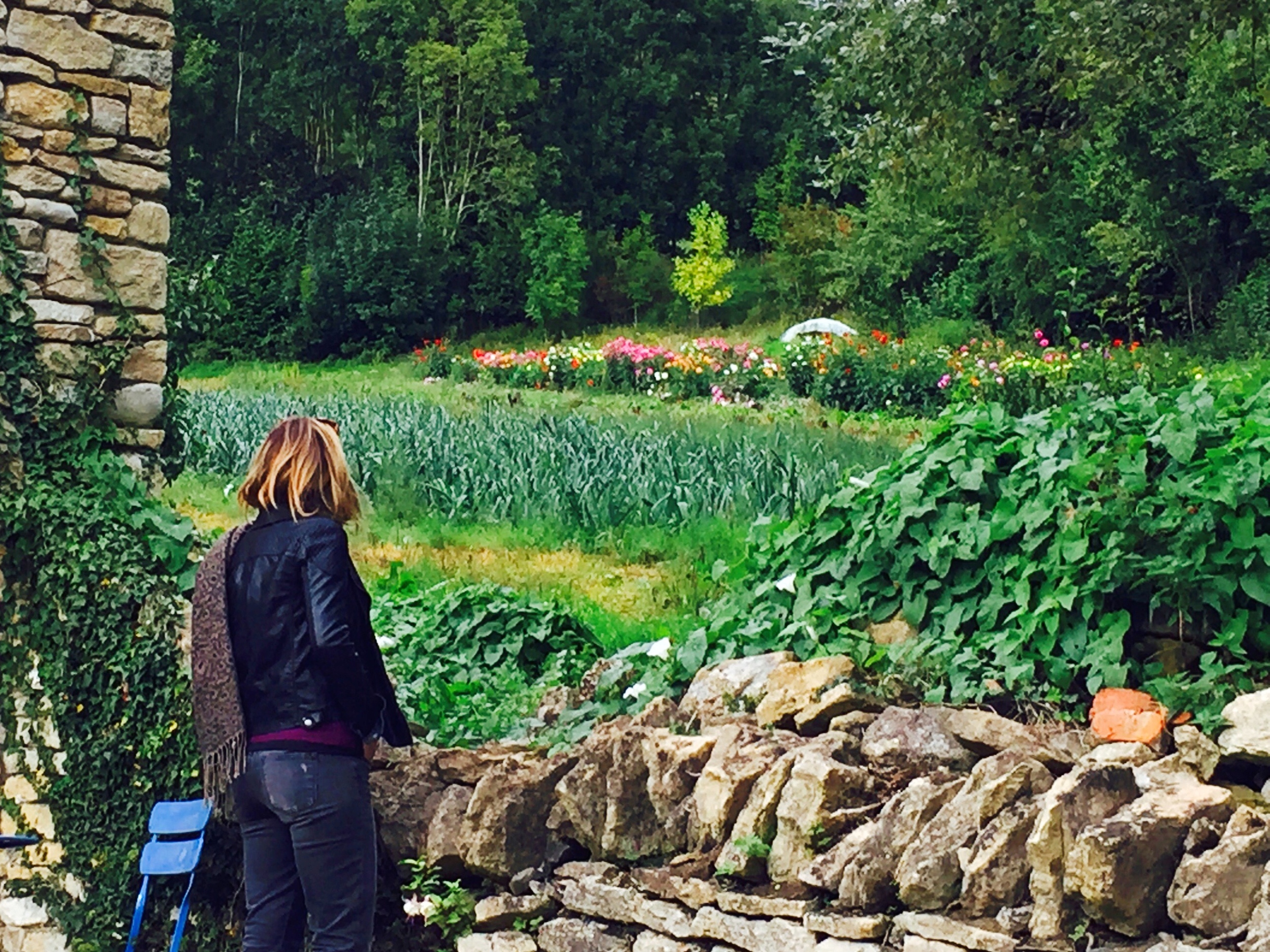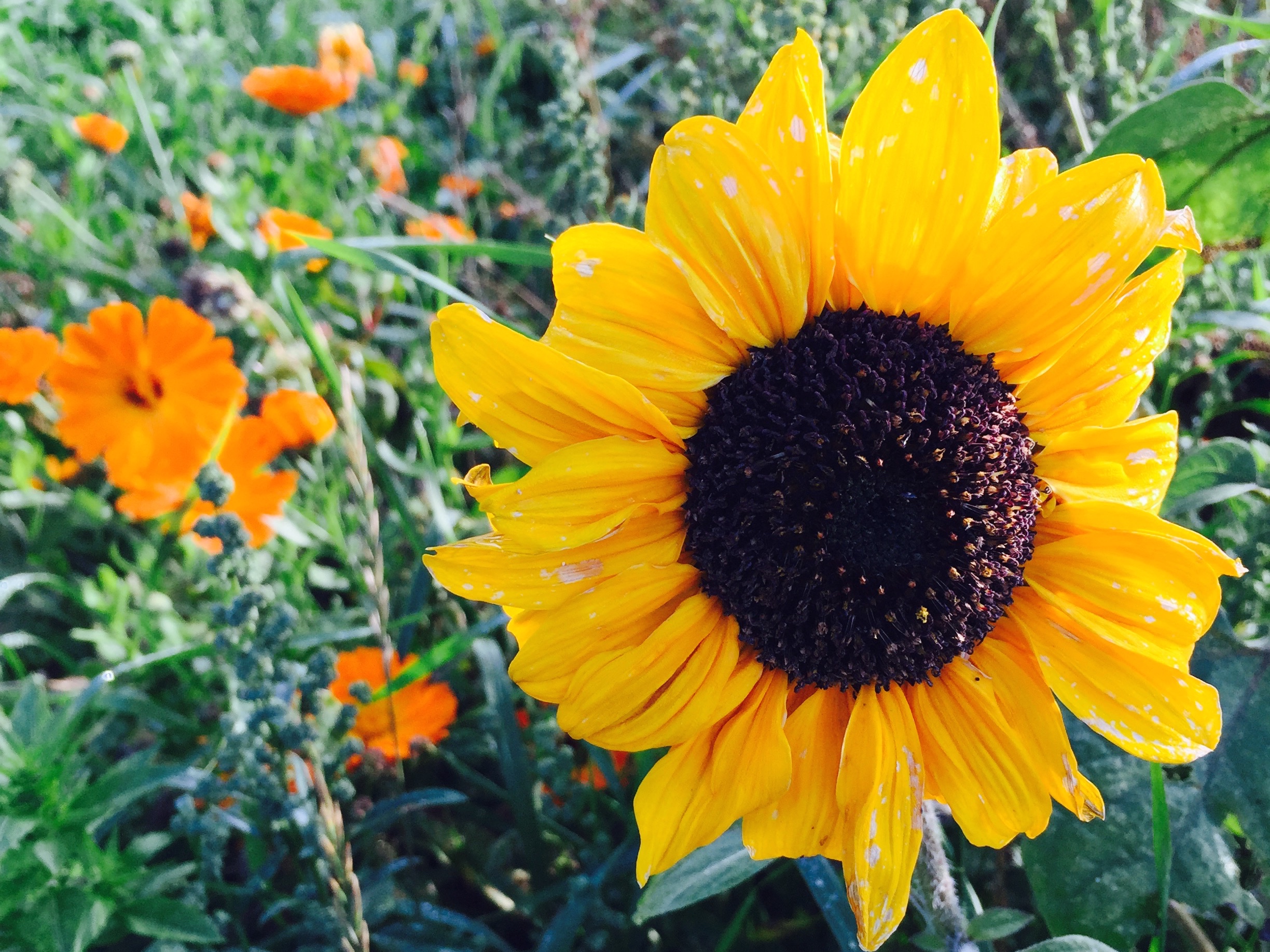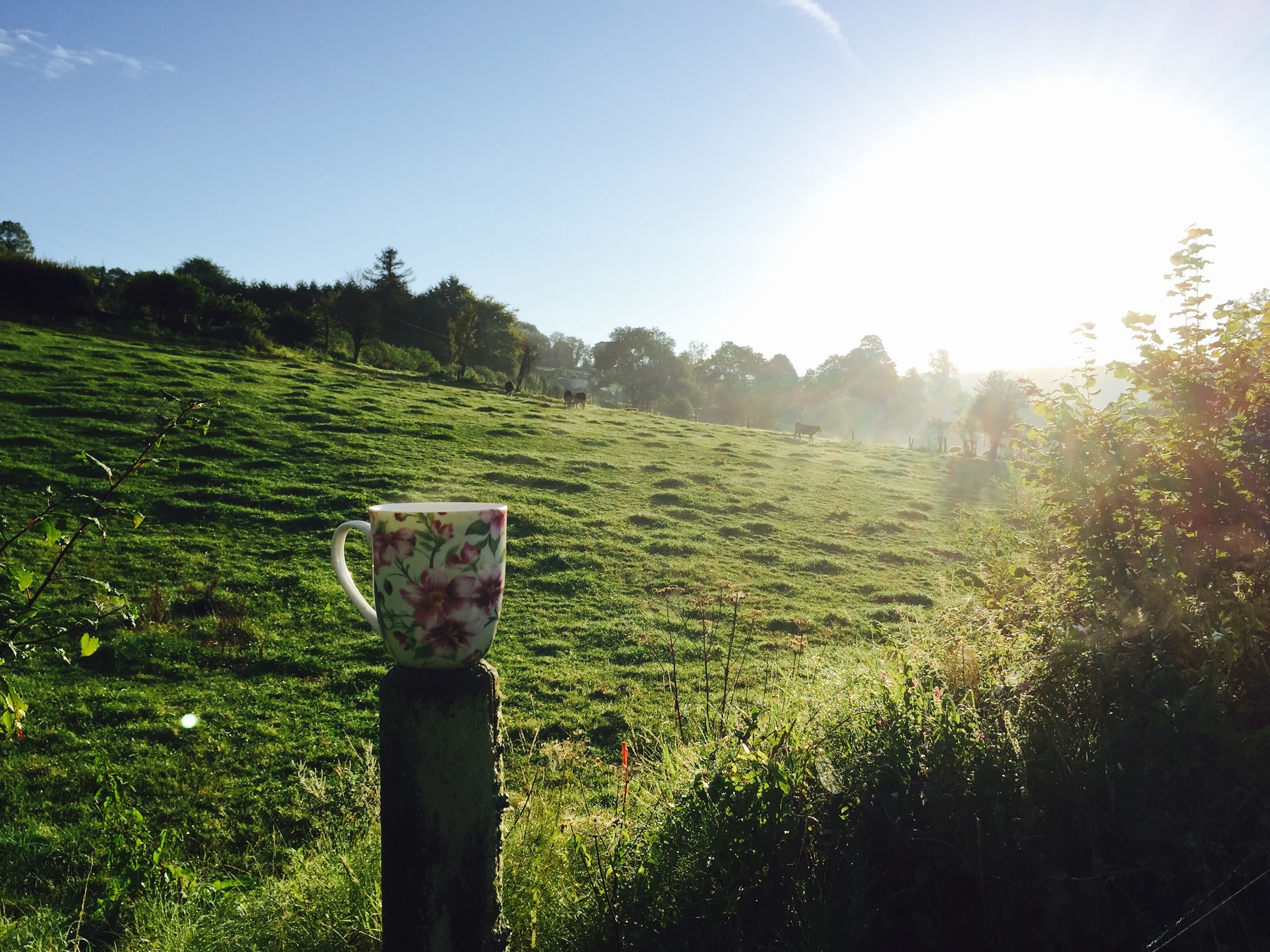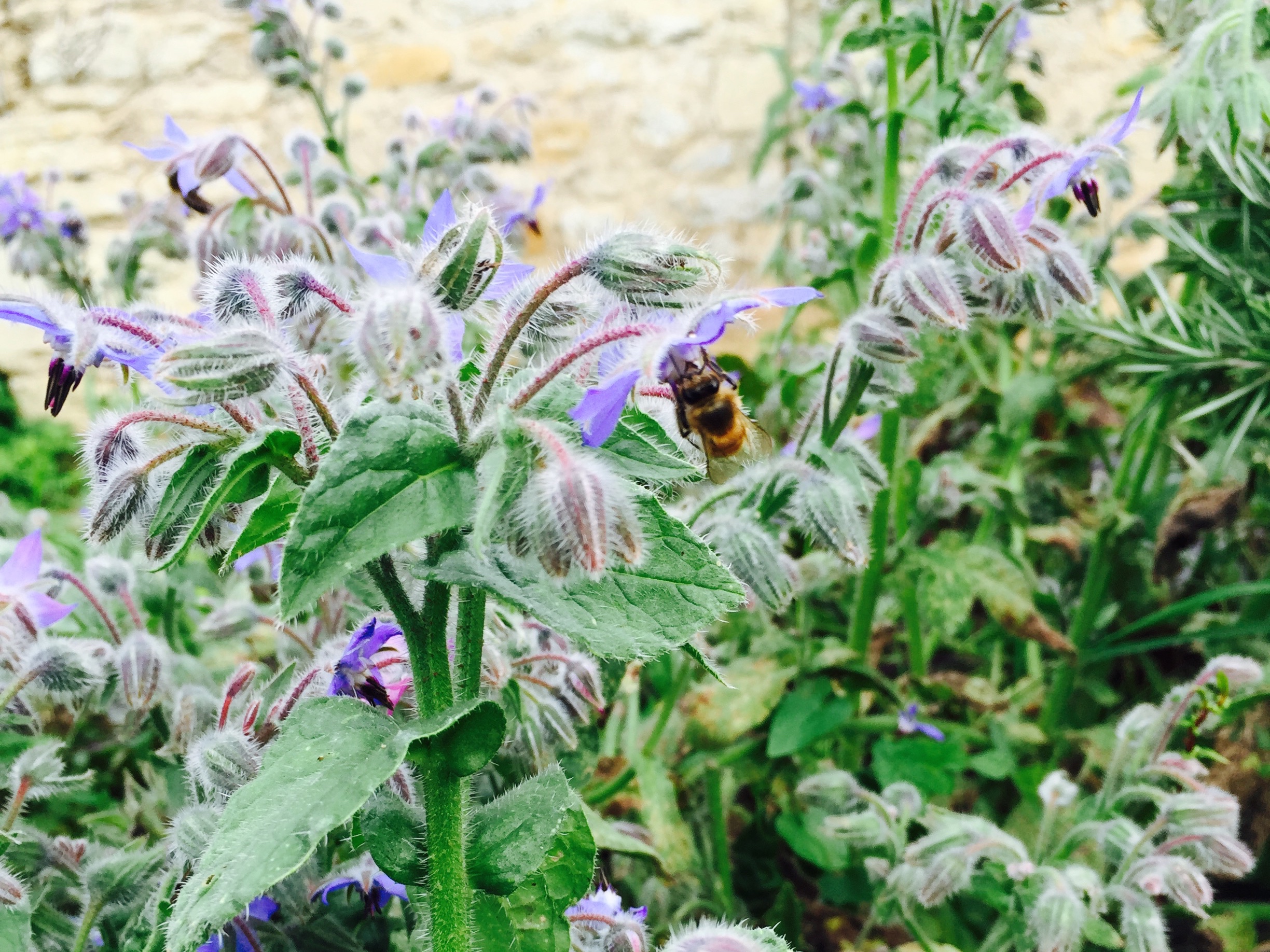An Apiary in the Hedgerows
Angharad has just returned from a walk with a handful of blackberries, elderflowers, nettle and apple. She is going to make a fruit crisp and some tea. Three things about this:
1) Angharad wildcrafts like some people (me) frequent cafes; It’s a nonchalant, every-day sort of thing.
2) She doesn’t have to do so with the fear that someone will run her off with the right to bear arms and an angry dog. Novelty.
3) She found bee hives.
An apiary to be exact. The next farm over, near some old rows of sunflowers and leeks.
But first things first. Angharad is one of my English bee sisters. I’ll be saying 'Bee Sister' from time to time, so to be clear, a bee sister is a kindred spirit, Woman of the Bee, and usually also a woman whom I have studied with in England regarding old folk traditions to do with honey bees. I am staying in a terribly adorable cottage with Angharad and two other American bee sisters while we attend a workshop in Bath.
Angharad is an artist from Devon, a woman of the moors, and a fantastic maker of “worthy” foods: a Devon slang (she says) for particularly extra healthy foods that go well beyond “crunchy granola”, into the realm of hand-ground grains and self-harvested seeds. Naturally, she found us an autumnal feast of berries. You can find her art here.
The bee yard she discovered is a colorful haphazard apiary tucked in a circle of evergreens. The boxes are in different states of age and disrepair, brightly painted and oriented outwards. Tools and comb carcasses like about, and the bees feel a bit on edge, but healthy nonetheless. This beekeeper treats the bees. There are bottles of chemical treatments on the grass. There is also a hungry, nasty nest of wasp, ever-hunting the weaker colonies. I imagine this is why the bees feel a bit on edge.
Wasp are a big problem for honey bee colonies in England. Most beekeepers I’ve spoken with are used to loosing hives from wasps the same way American beekeepers talk about varroa mites (although England has varroa as well). In the summer, many beekeepers reduced the entrance to their hive to bee size: just big enough to allow one or two bees to pass through, and allowing guard bees a smaller territory to defend. Once a wasp gains entry to a hive, it will eat brood, honey and kill bees. If it makes it out of the hive alive, it is covered with the scent of the hive and the guard bees allow it back in, not realizing it is an imposter. Entire colonies are taken down in this way. You can imagine why this apiary may have been a bit more on edge.
There is something so liberating about walking the english countryside. While I’m sure the local farmer wouldn’t exactly love us ladies visiting his/her hives, the fact that they are just simply there, up the track without a fence, a “keep out,” or a “beware of bees” sign, softens my heart. This is a country made of up footpaths and hill walking. I feel simply elated when I see another Public Footpath sign jutting out from the hedgerow. Like I’m getting away with something every time I pick an apple or strike out across of field scattering timid sheep. If you pass someone on a walk in the countryside, you always say hello. It’s neighborly and civil. I love it.
It’s the same with bees. Or any being really. It’s a kindness to say hello. To introduce yourself. I said hello to the horses, the sow and her piglets, and to the apiary (to be honest I didn’t say hello to the wasp nest). It’s more than hello however. When approaching a hive, it’s a matter of sending love and intention out with the hello. The hive is a fully conscious, highly intelligent being made up of many many functioning cells, called bees. It can feel your intentions, your mood, your fear, your anger, your love. And if you listen you can feel the nature of each hive itself.
In my case, I noticed the hive I was standing near at the end of my visit felt a little agitated. It was the hive closest to the wasp nest, so perhaps this is why. I chose to walk away, but on my way back down the track, a bee got caught in my fuzzy sweater. Once a bee is caught in your hair or your clothes, they often struggle to burrow in toward the warmth of the skin where they can sting. Think about their chief predators, bears, skunks and raccoons with thick fur. I removed the sweater, walked further away from the hives and opened it up to release her. Unfortunately, she was not happy with the experience and immediately gave me a small sting in the belly before nailing me on the wrist.
Word to the wise: if you get stung near hives and don’t have protective gear, calmly walk away from the hives so as not to draw attention with the scent of the sting.
Second bit of advice: because I'm not severely allergic, I often try to lay down and let the medicine of the venom do it's thing. You can too, although, I'm not a doctor, so always use your best judgement. It is uncanny how often bee stings end up on prominent meridians or places where you’re already experiencing aches and pain. The potent dose can be quite healing. In fact, there is an entire modality of healing dedicated to apitherapy and bee venom therapy.
However, if it’s really not your game to lay in the grass and feel the poison move through your body as a healing agent, then you can try all sorts of things to cool and draw the poison like baking soda paste, bentonite clay, honey, raw onion, arnica gel, ice and kisses.
In the meantime, I encourage walking the hills, pinching apples and wandering into secluded apiaries to feel the magic of the bee.
